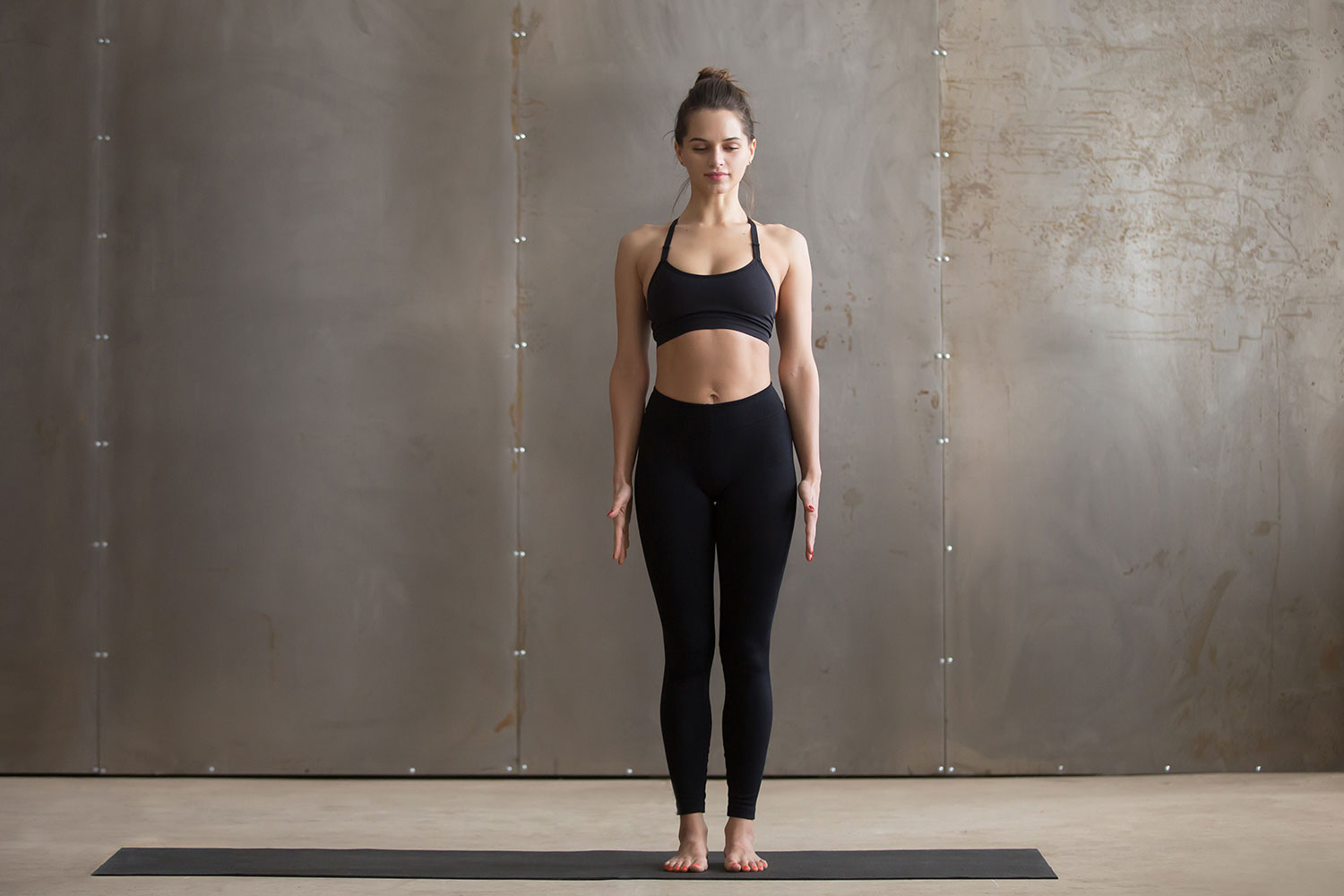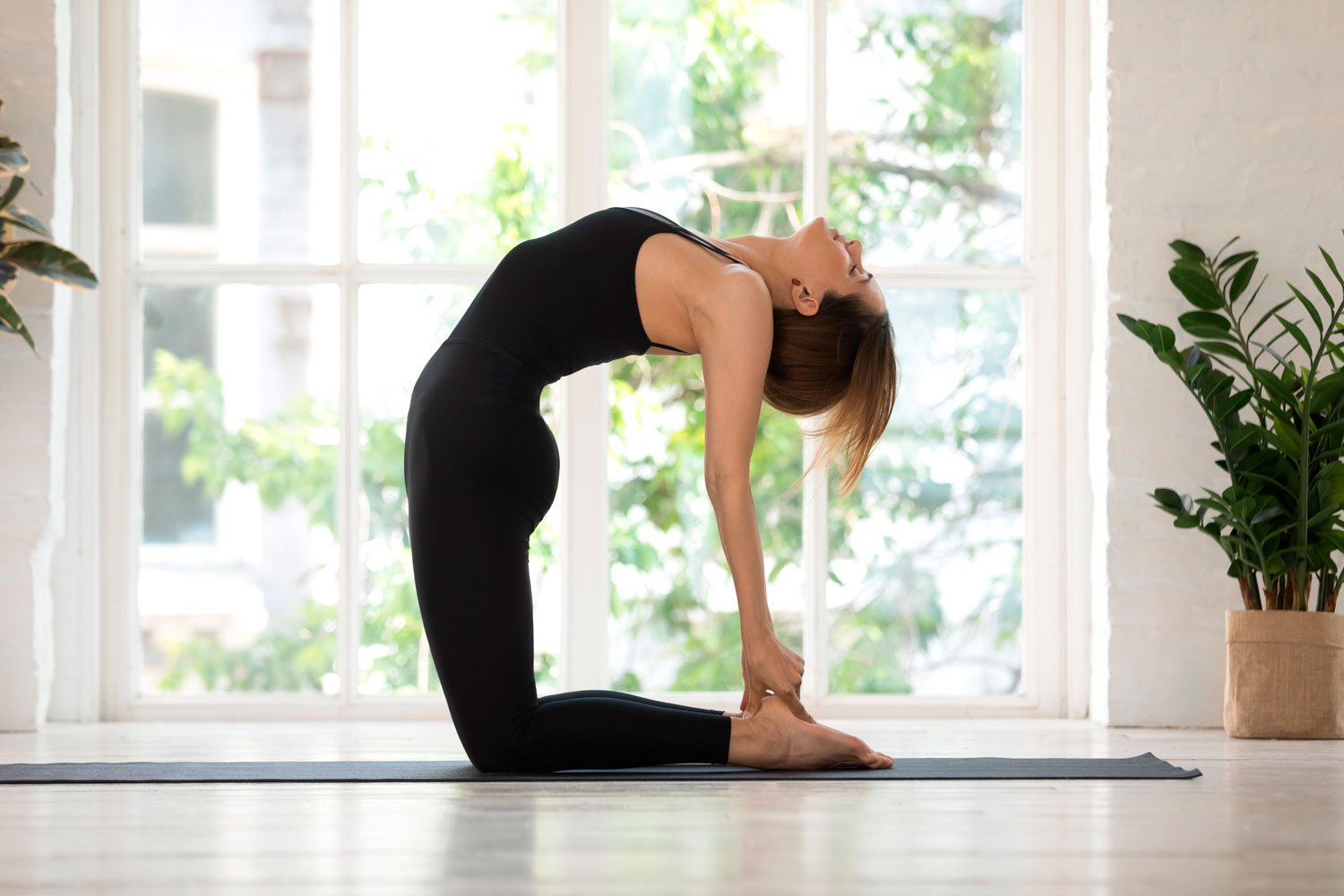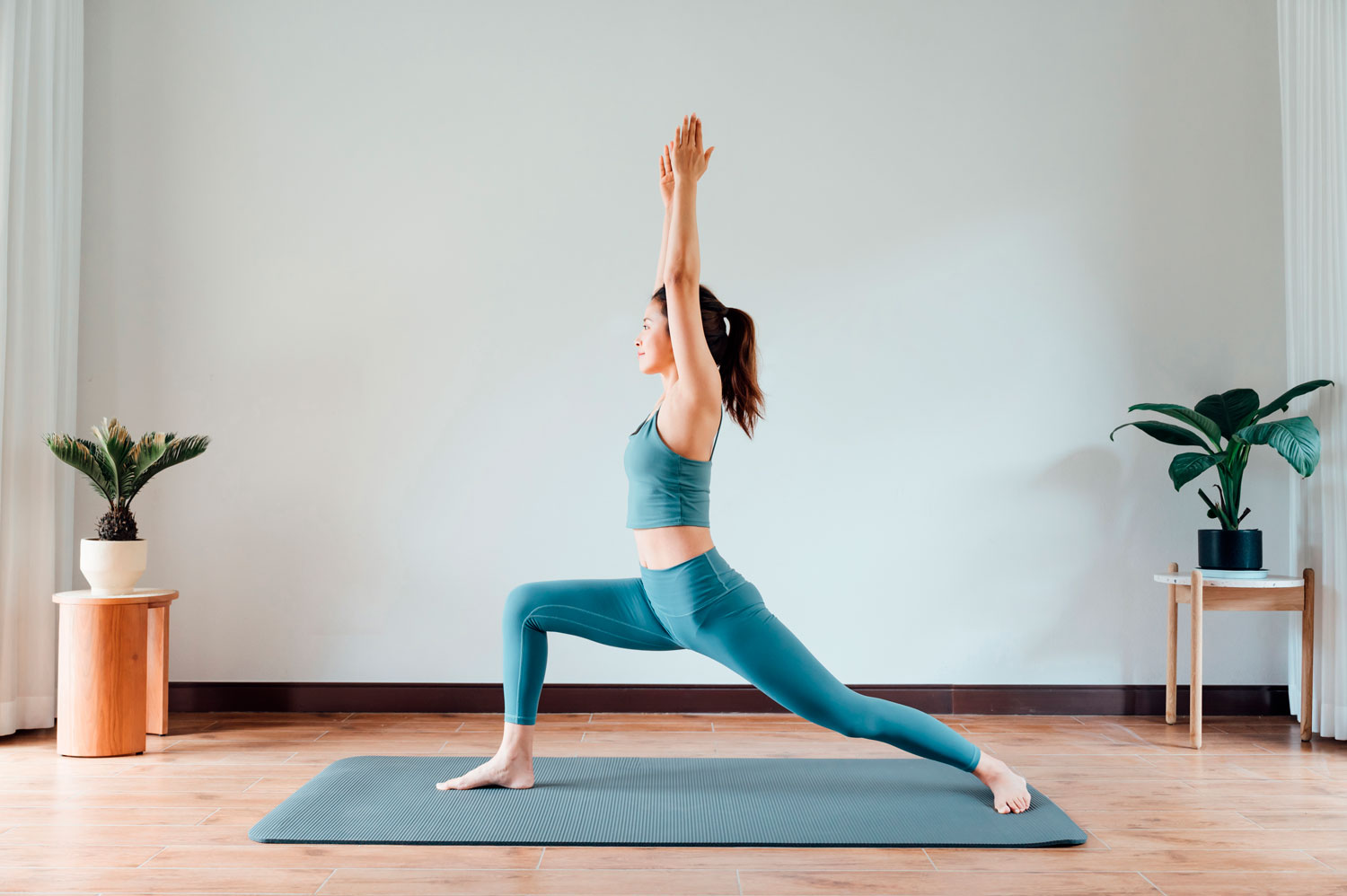
As a former social media manager and marketing guru, Amy…
What do you think of when you think Mountain Pose? Standing tall like a mountain? Then you’re pretty much right on track.
Mountain Pose is a standing pose also known as Tadasana (t-a-dd-as-aana) in Sanskrit. It’s also known as Samasthiti, or Equal Standing Pose, in Ashtanga. The name derives from the words “sama” (upright, straight and unmoved) and “sthiti” (standing still).
Tadasana is known as Mountain Post because it is said to embody the stability, strength, poise, and stillness – the same characteristics and traits that a mountain possesses. The feet are earthed like the base of a mountain and the body lengthens upward and stands tall as it rises to greet the sky.
Mountain Pose is a beginner yoga pose and it may seem like (especially to a yoga beginner) that you’re just standing on your mat. But, a lot of poses could seem that simple when taken at face value. There’s so much more technique to the Mountain Pose than meets the eye. And, considering that this pose is the foundation for all other poses makes it way more important than one would originally think.
Benefits of the Mountain Pose

Mountain Pose has many amazing benefits both for the physical and mental aspects of your body. This pose does a number of different things for you including improving posture, strengthening of the thighs, knees, and ankles, firming of the abdomen and buttocks, and relieving the pain of sciatica. It also helps decrease the flatness of your feet.
This pose also cultivates clarity and calmness, induces a sense of presence and peace, and develops strength, balance and endurance.
When practicing with a partner, you can learn more about your alignment in this standing position. Have your partner stand beside you (on either side) and check that your ear hole, the center of your shoulder joint, the center of your outer hip, and your outer ankle bone are in one line which is all perpendicular to the floor. It is, of course, much easier for your partner to tell than for you to try to decipher on your own.
Common and Suggested Preparatory and Follow-Up Poses

You can use one or more of the following poses and or sequences leading up to Mountain Pose: Adho Mukha Svanasana, Uttanasana.
You can use one or more of the following poses or sequences following Mountain Pose: create a balanced sensation of Tadasana in all standing poses.
How To Step by Step: Mountain Pose

Step 1
Start by standing with the bases of your big toes touching. Place your heels slightly apart so that your second toes are parallel. Start lifting and spreading your toes and the balls of your feet and then place them gently back down on the floor. Rock back and forth and side to side as if you’re trying to loosen your body up. Gradually reduce the rocking and swaying until you reach a standstill and your weight is evenly balanced on your feet. Things to remember:
- Ensure your weight is distributed evenly between both the inner and outer areas of both feet as well as from the front to the back of the feet.
- Pay special attention to the big toe by pressing the base of it into the floor.
- Ensure your ankles are neutral – neither rolling inward or outward.
Step 2
Tighten your thigh muscles until they’re firm and your knee caps lift as you flex. Make sure to do this in your legs without hardening your lower stomach. Strengthen the inner arches by lifting your inner ankles while imagining a line of energy flowing all the way up along your inner thighs and reaching to your groin area. From there, the energy travels through your core, torso, neck, and head before finally traveling out through the crown of your head. Turn your inner thighs slightly inward, lengthen your tailbone towards the floor and lift the pubis towards your navel.
Things to remember:
- Keep the knees soft so that you don’t accidentally lock them out and risk hyperextension.
- Make sure you’re not squeezing or flexing your butt.
Step 3
Next begin pressing your shoulder blades into your back, then follow by widening your shoulder blades across your back and releasing them down your back. Without pushing your lower front ribs forward, life the top of your sternum toward the ceiling. Widen your collarbones and hang your arms to the side of your torso. Things to remember:
- Aim to bring your pelvis, rib cage, and shoulders in alignment with one another.
- Draw energy up from the floor (the earth) and channel it through your body.
Step 4
To continue, balance the crown of your head until it’s directly over the center of your pelvis and your chin is parallel to the floor, relax your throat and let your tongue relax and widen and fall flat on the floor of your mouth. Allow your eyes to soften and relax.
Step 5
Stay in the pose for 30 seconds to 1 minute while breathing easily.
When Do You Use Mountain Pose?
 When Do You Use Mountain Pose
When Do You Use Mountain Pose
The Mountain Pose is often the one used when beginning and returning to the standing sequences of a practice. The pose provides space in the practice to reconnect with our breathing, grounding our feet, inviting calmness and clarity onto our mat and into our minds.
Alignment and attitude during this pose are crucial because they both inform and influence the rest of the practice. Weight distribution in the feet, the positioning of the hips and pelvis, the breathwork, and the alignment of the spine all come together to create this pose that affects other poses.
Modifications & Variations

Whether you want to modify the pose for difficulty reasons or you just want to do a variation of Mountain Pose, there are plenty of ways to change things up.
- Pick up all ten toes while stretching them to create as much space as possible between the big and little toes. Bring them back down to the mat again and lift up onto your tip toes as you inhale. Continue pressing the balls of your feet into the mat as you return.
- Press the base of your big toe into the floor and broaden the feet from the big toe to the little toe.
- Shift your weight gently from the front to the back of your feet and side to side to establish a sense of grounding. Seek and find the space where you feel most stable and occupy it.
- Your arms can be altered in a variety of ways including stretching the arms upward, perpendicular with the floor, and parallel with each other with the palms facing inward, interlacing the fingers and extending the arms straight in front of your body, crossing your arms behind your back while holding each elbow with the opposite side hand.
Worried about your posture and alignment? Stand with your back against a wall to check your alignment while in Mountain Pose. Stand with the backs of your heels, sacrum, and shoulder blades touching the wall while keeping your head from touching.
Want a little extra challenge? Practice Mountain Pose and challenge your balance by practicing this pose with your eyes closed. Balancing without reference to the outer environment is much more difficult than when you have a point of reference to look at, for example.
Having trouble? It’s time to work on your balance and focus. You can do so by working on the activation through the feet and legs. You can also take Savasana to clear teh mind and expand your breath.
Take caution with doing Mountain Pose if you’re experiencing headaches, insomnia, or low blood pressure.
For the Beginners

Stand with your inner feet slightly apart (roughly 3 to 5 inches) to improve the balance in the Mountain Pose.
What's Your Reaction?
As a former social media manager and marketing guru, Amy is up to date on the hottest trends. Using her prior experience, she flawlessly delivers relevant and accurate information on a wide range of topics.














